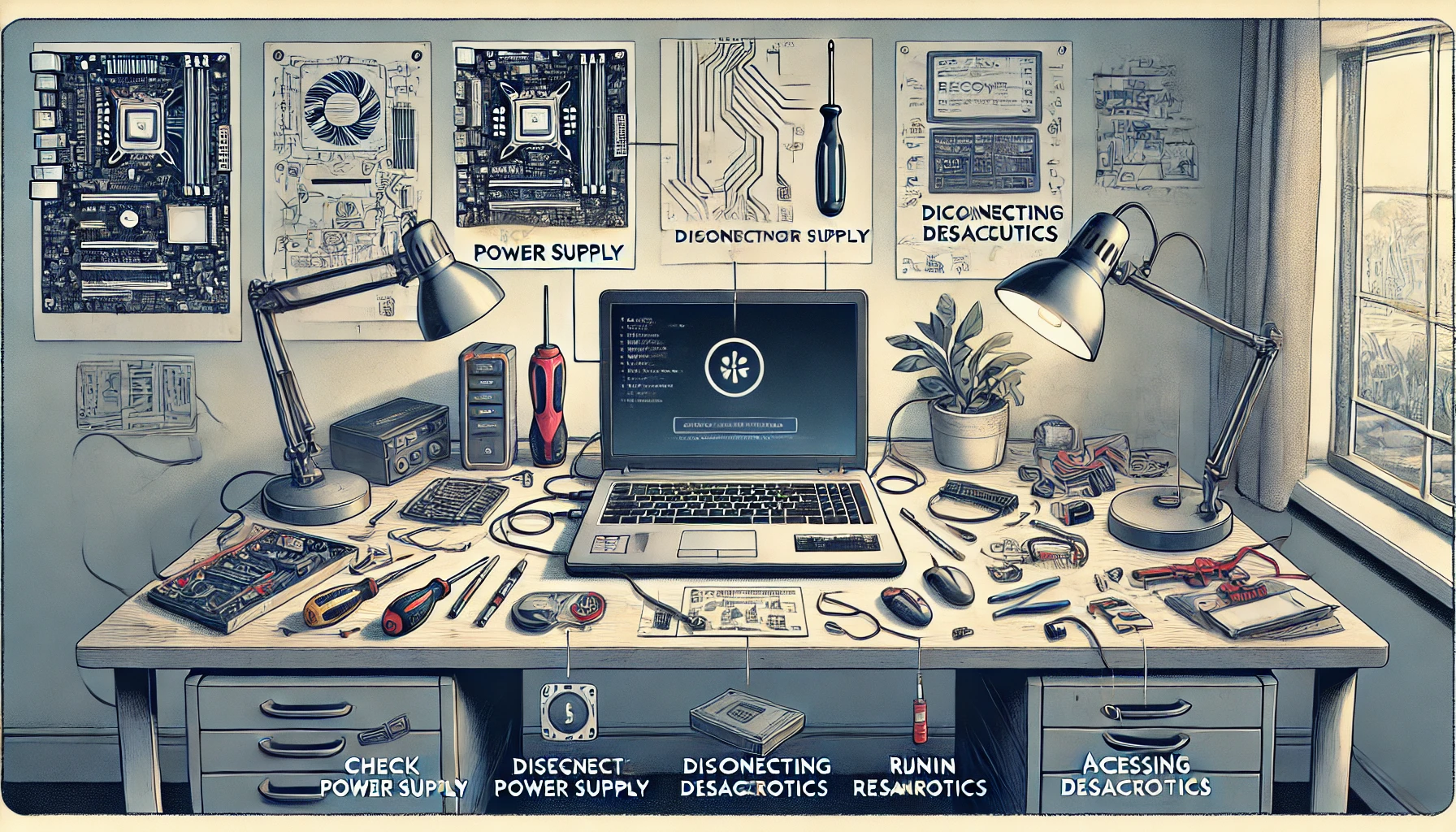Having your laptop refuse to boot can be incredibly frustrating, especially when you need it the most. Fortunately, many boot-up issues can be resolved with some troubleshooting. Here’s a comprehensive guide to help you diagnose and fix a laptop that won’t start.
Step 1: Perform a Basic Check
Image Idea: A photo of a laptop connected to a charger with indicator lights on.
Before diving into advanced troubleshooting, ensure these basics are covered:
- Power Supply: Ensure your laptop is plugged in, and the charger is functioning. Look for signs like indicator lights on the laptop or the power adapter.
- Battery Issues: If you’re using a removable battery, take it out, reconnect it, and try booting up. With a non-removable battery, plug in the charger directly.
- External Devices: Remove all USB drives, external hard drives, and other peripherals that might interfere with the boot process.
Step 2: Perform a Power Reset
A power reset can resolve many hardware glitches:
- Turn off the laptop.
- Disconnect the charger and remove the battery (if removable).
- Hold the power button for 15-30 seconds to drain any residual power.
- Reconnect the battery and power adapter, then try booting up.
Step 3: Examine Your Display
Sometimes the issue isn’t with the laptop but with the screen:
- Check if the display brightness is turned down or if the screen is damaged.
- Connect the laptop to an external monitor using an HDMI or VGA cable to see if there’s output.
Step 4: Listen for Beeps or Observe Error Codes
Laptops often use beep codes or LED flashes to indicate specific issues:
- Refer to your laptop’s user manual or the manufacturer’s website to decode these signals.
Step 5: Boot in Safe Mode
If the laptop powers on but fails to boot into Windows, try Safe Mode:
- Restart the laptop and press the F8, Shift+F8, or Shift+Restart key combination (varies by model).
- Select Safe Mode from the menu.
- Once in Safe Mode, uninstall recent updates or drivers that might be causing the problem.
Step 6: Use Windows Recovery Options
If Safe Mode isn’t accessible, use the recovery tools:
- Restart your laptop and repeatedly press F11, F12, or the key for your recovery menu (refer to your laptop’s manual).
- Select Repair Your Computer or Startup Repair to let the system diagnose and fix boot issues.
Step 7: Check Your Hard Drive
A failing hard drive can prevent your laptop from booting:
- Access the BIOS/UEFI by pressing the designated key (like F2, Delete, or Esc) at startup.
- Look for your hard drive under the boot menu or storage settings.
- If it’s missing, it may have failed and need replacement.
Step 8: Reinstall the Operating System
If other fixes fail, reinstalling your operating system might be necessary:
- Create a bootable USB drive with your operating system installer.
- Insert the drive and follow the on-screen instructions to reinstall Windows or macOS.
Step 9: Seek Professional Help
If your laptop still refuses to boot, it might be time to consult a technician. Common hardware issues that require expert assistance include:
- A damaged motherboard.
- Faulty RAM or CPU.
- Overheating or fan malfunctions.
Preventative Tips to Avoid Boot Issues
- Update Regularly: Keep your operating system and drivers updated.
- Use Antivirus Software: Protect your laptop from malware that could corrupt system files.
- Backup Your Data: Regularly back up important files to avoid data loss in case of hardware failure.
- Handle Your Laptop Carefully: Avoid dropping or exposing it to extreme temperatures or moisture.
Conclusion
A laptop that won’t boot up can feel like a dead end, but with these steps, you can often identify and resolve the issue. From basic checks to more advanced troubleshooting, this guide equips you with the knowledge to tackle boot-up problems. If the issue persists, don’t hesitate to seek expert help to ensure your laptop gets back up and running smoothly.
For professional laptop repair services or expert advice, contact SaskTechSupport, Saskatchewan’s trusted remote tech support provider with over 20 years of experience. Let us help you fix your laptop issues quickly and efficiently!
















